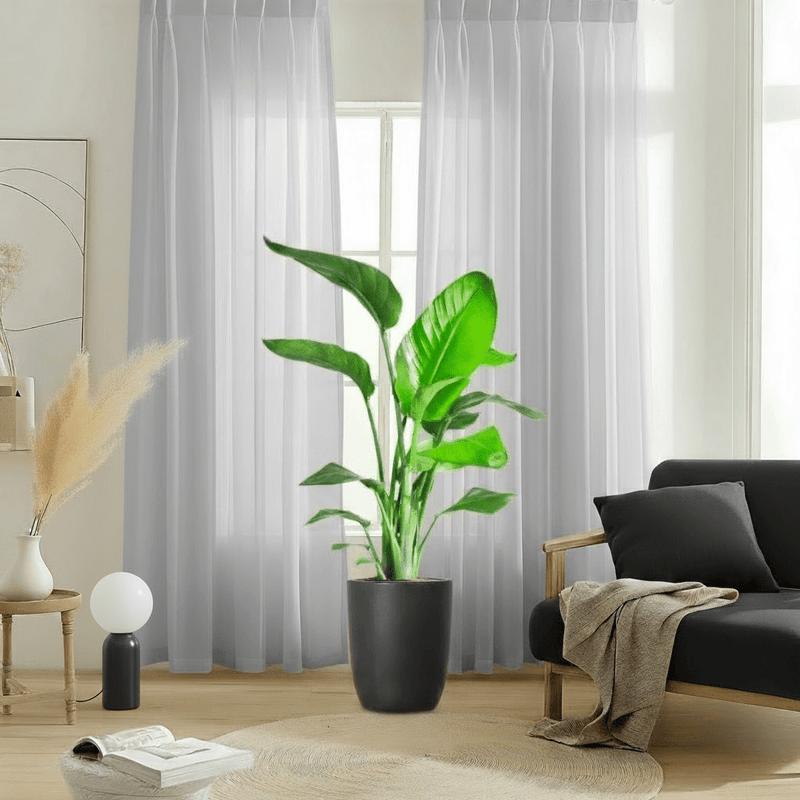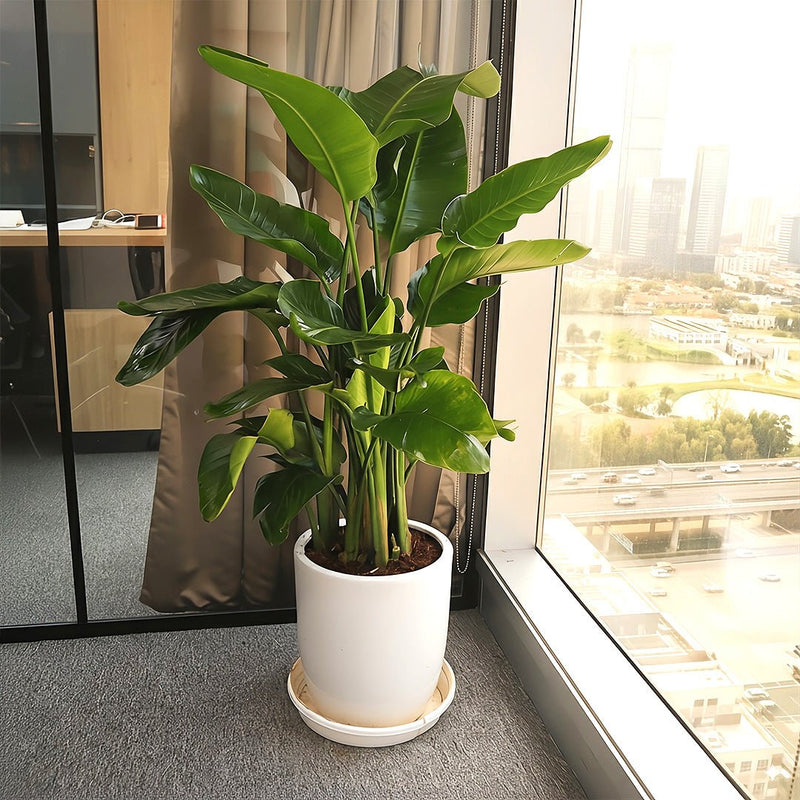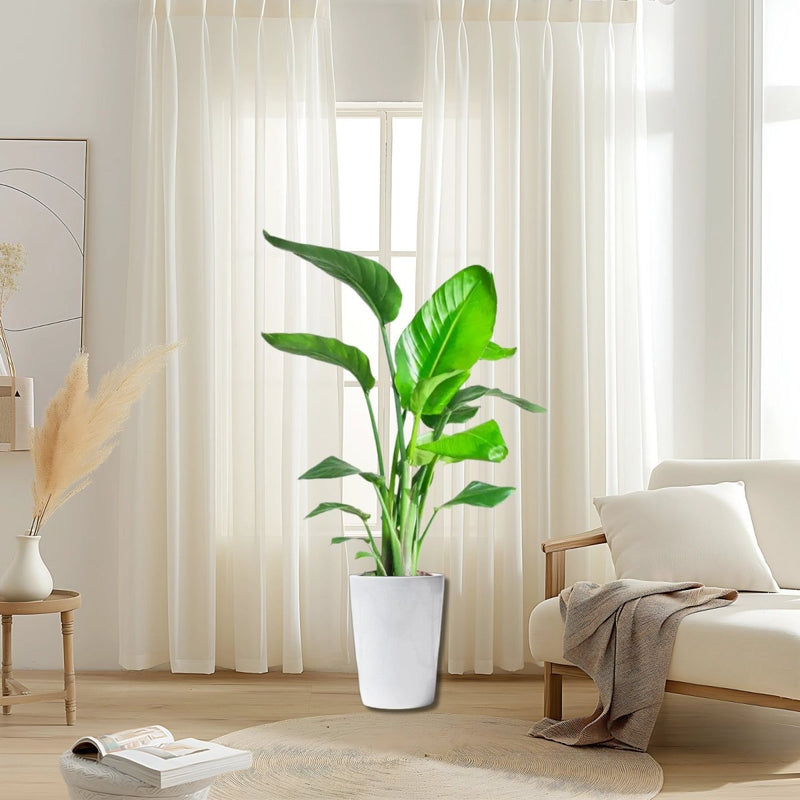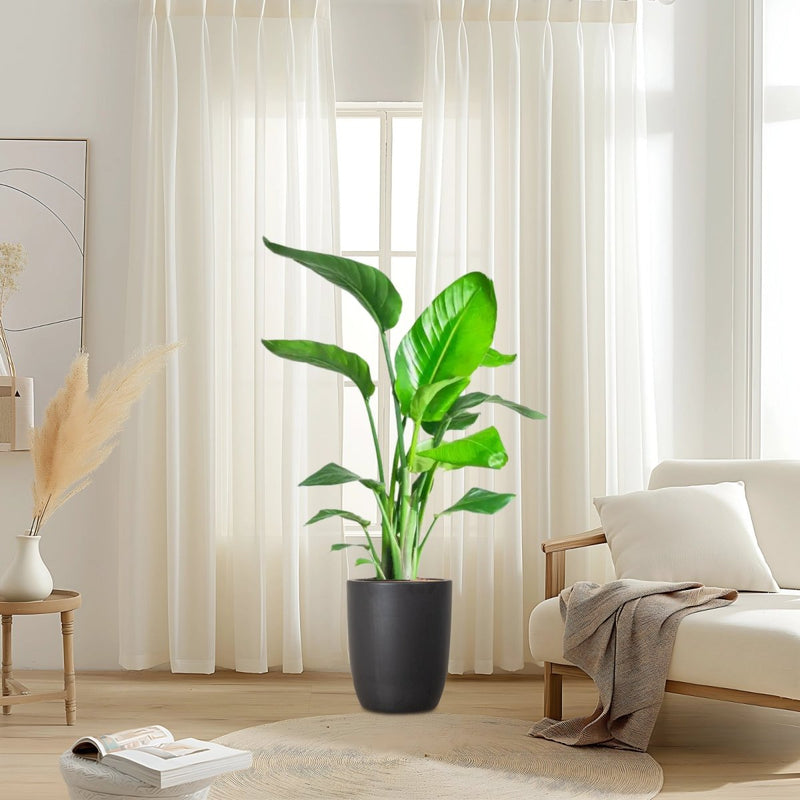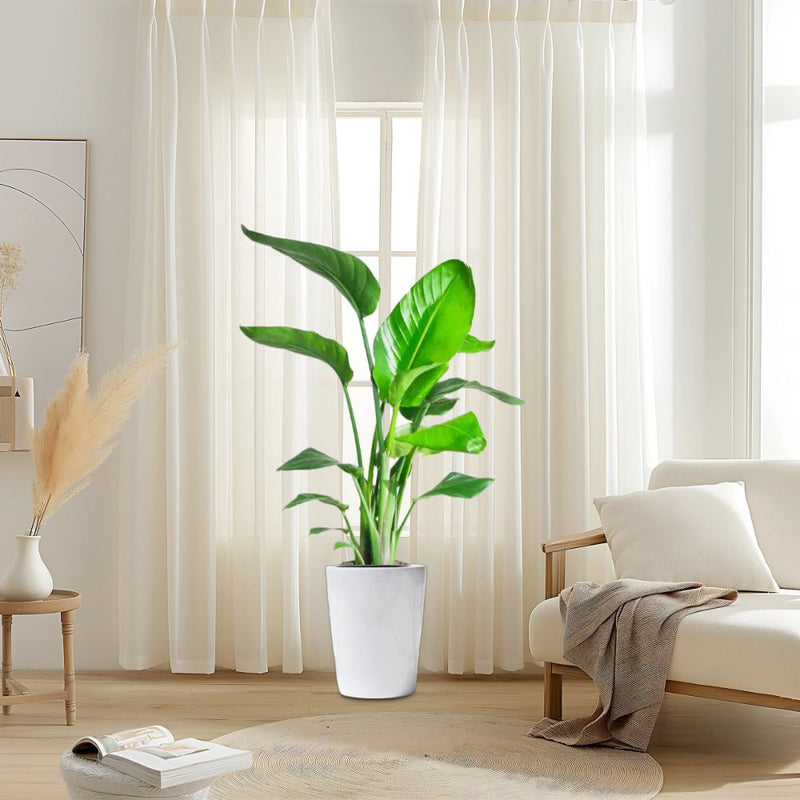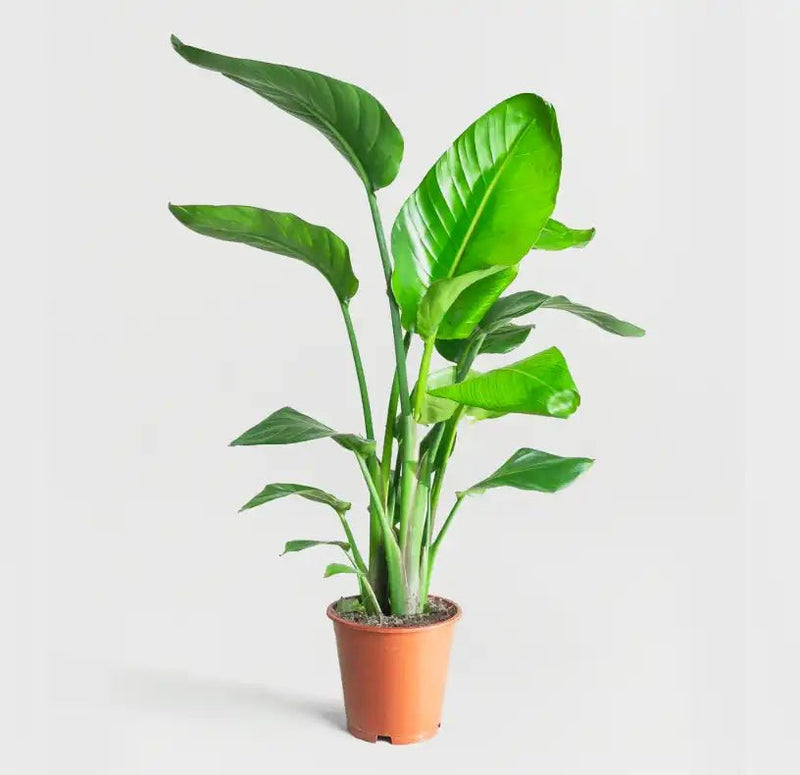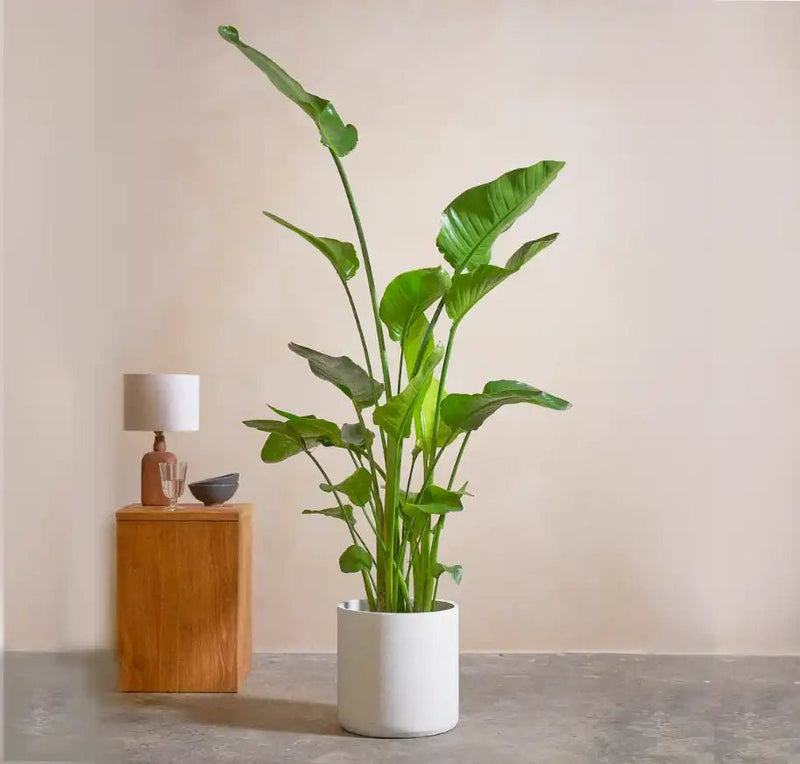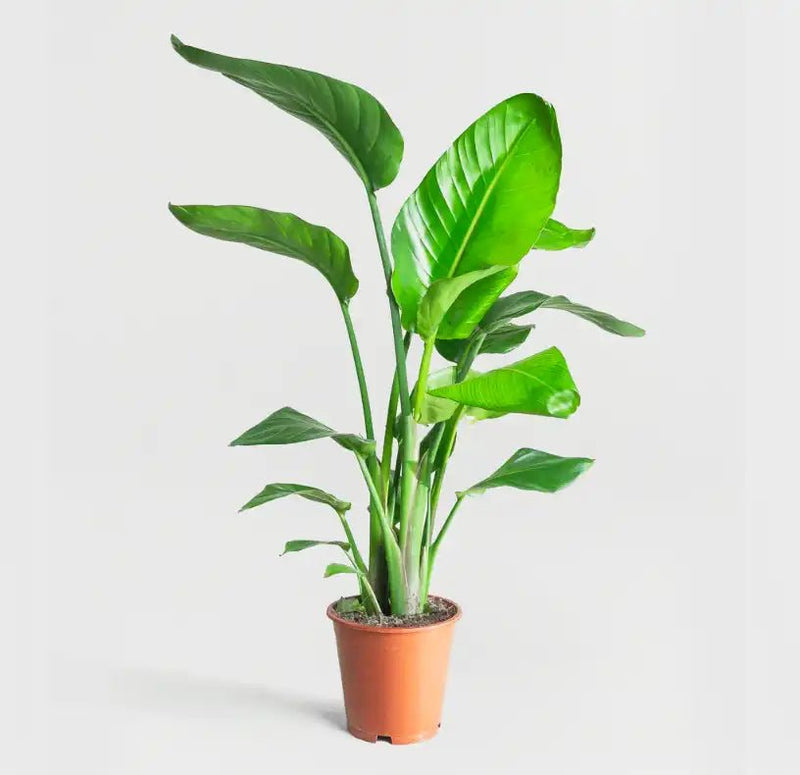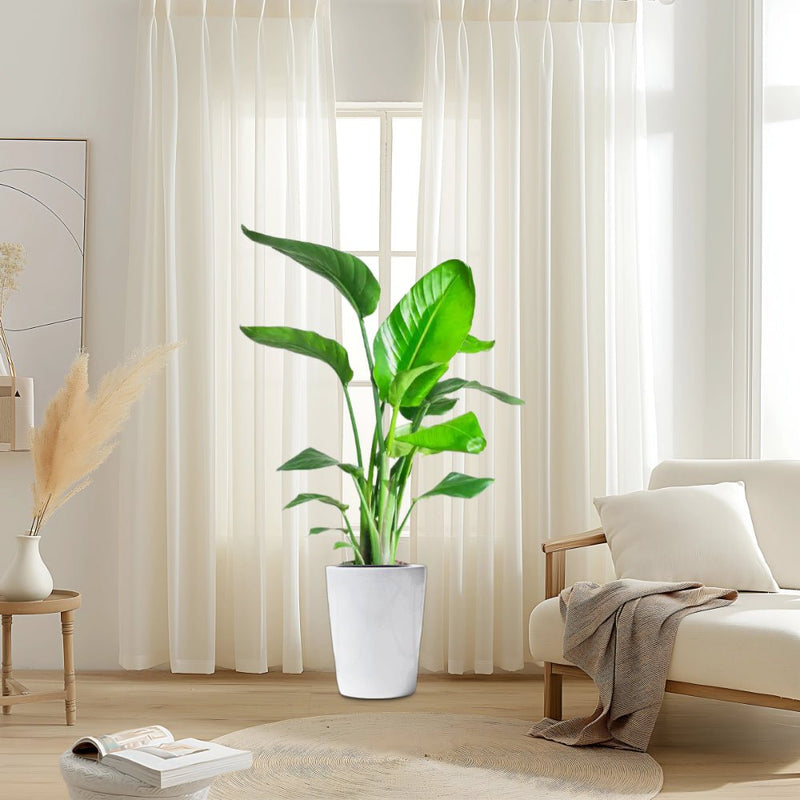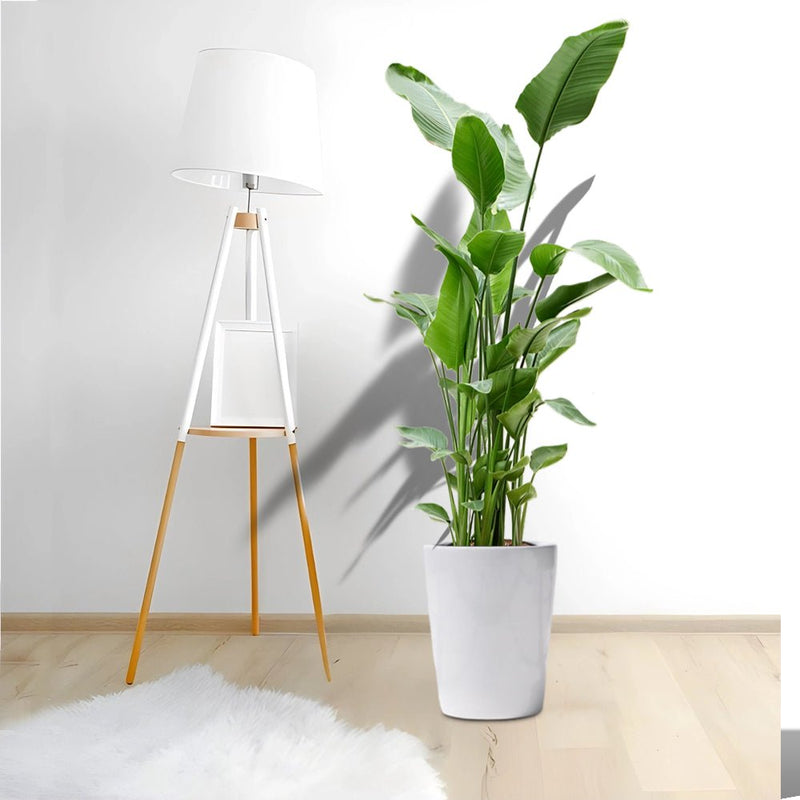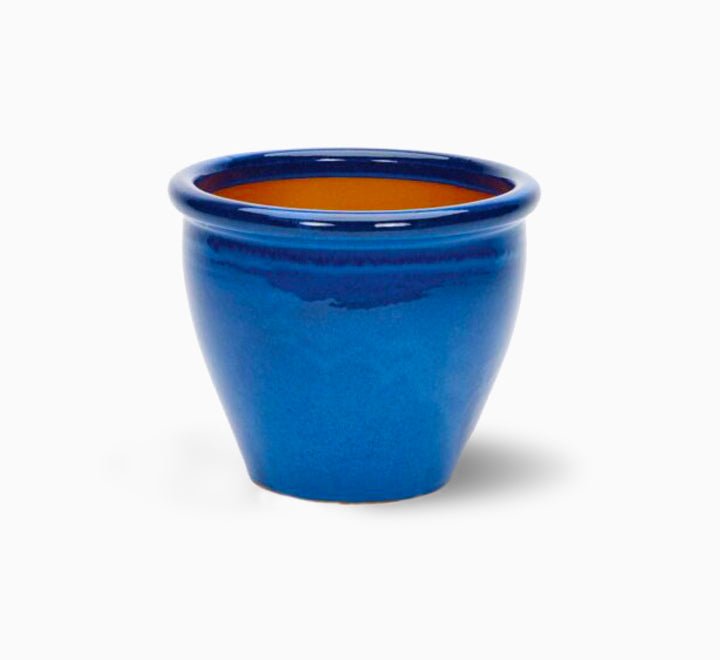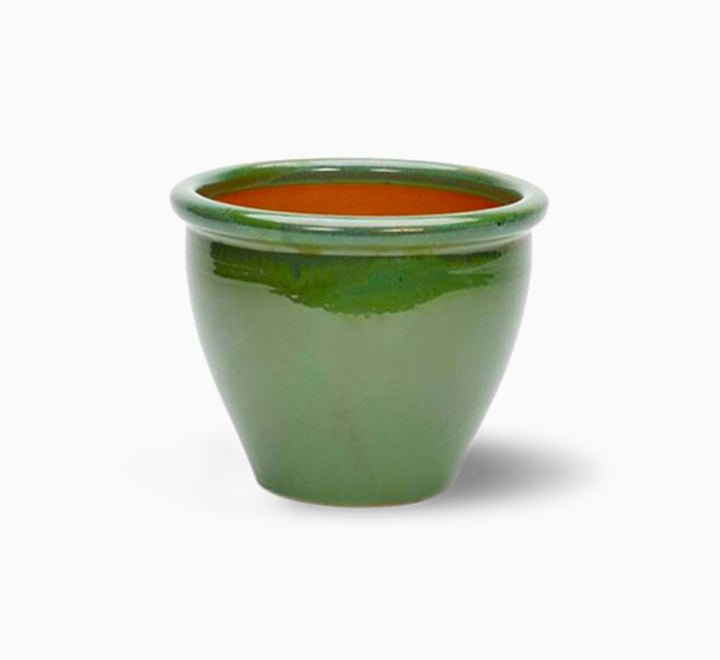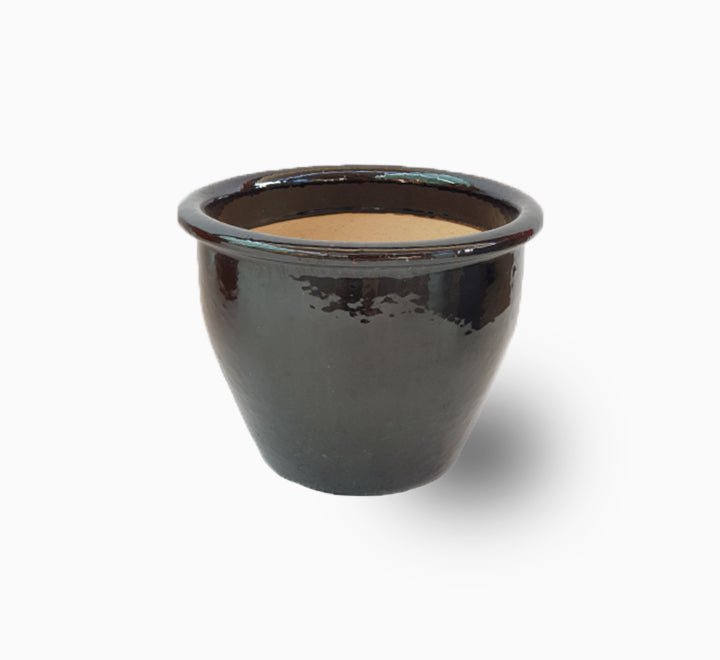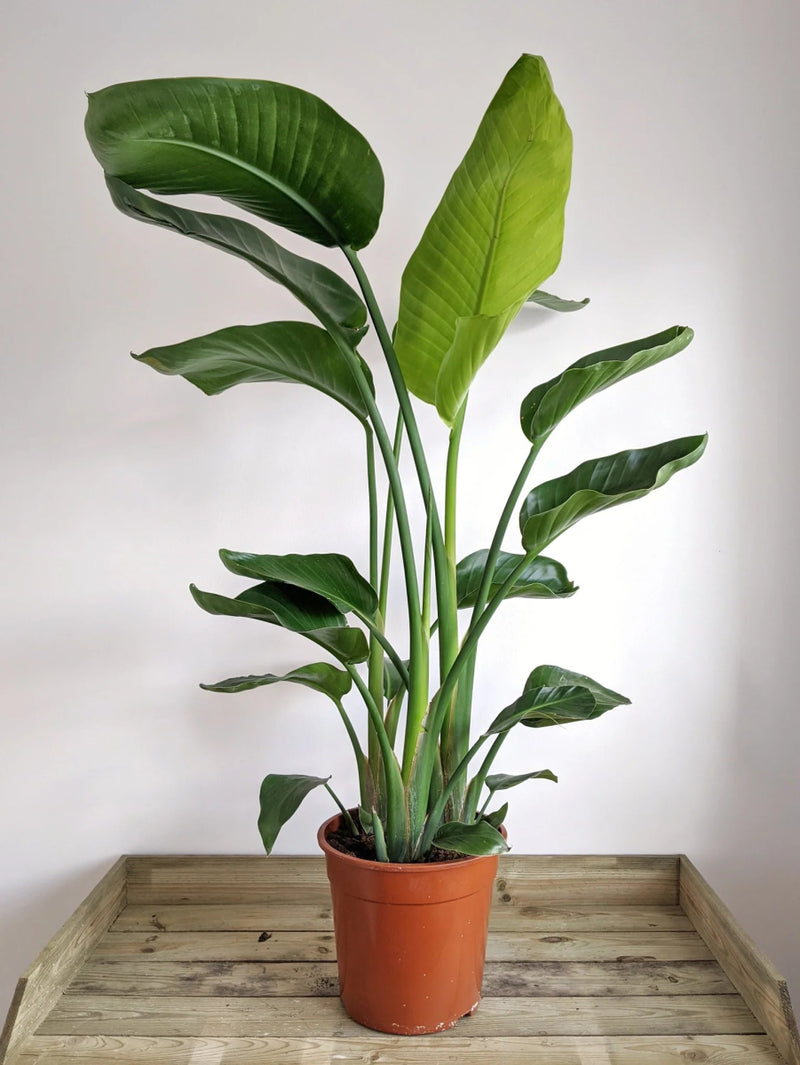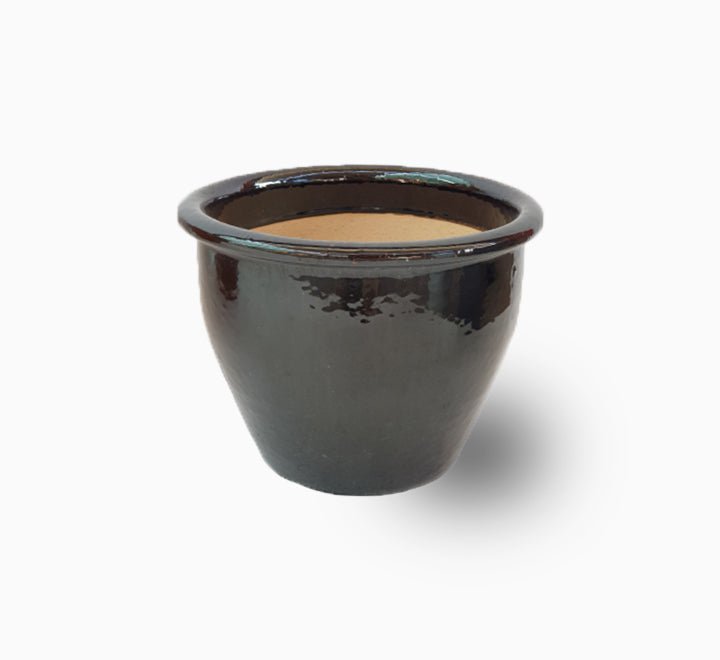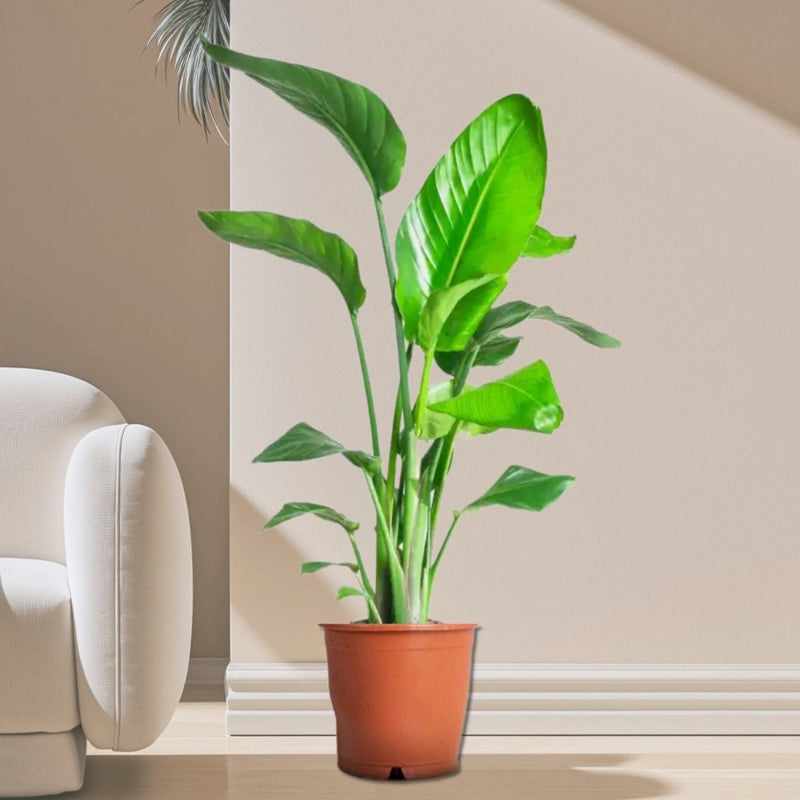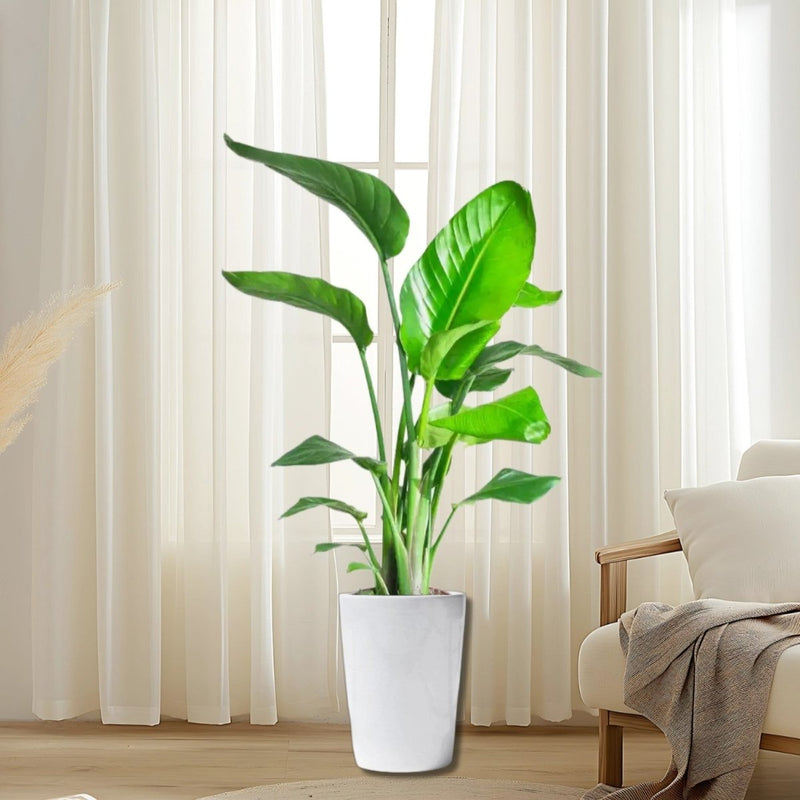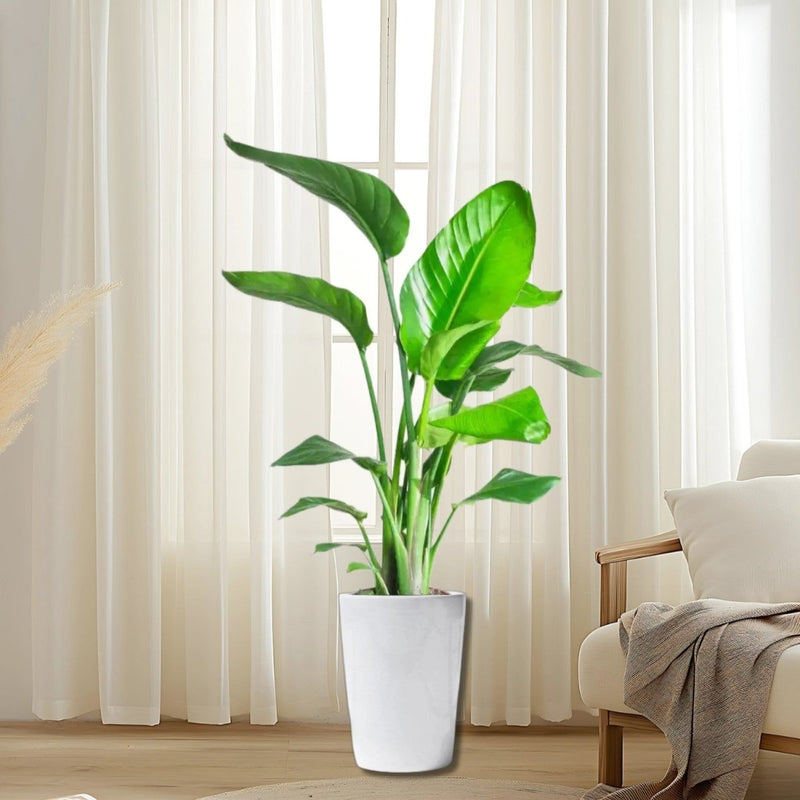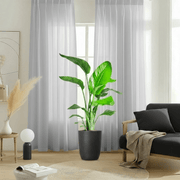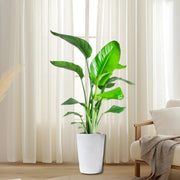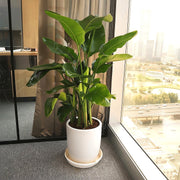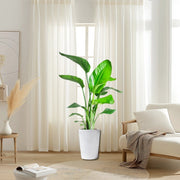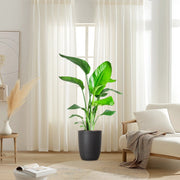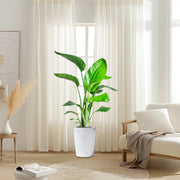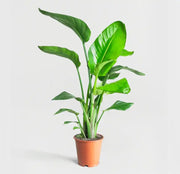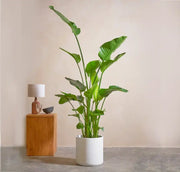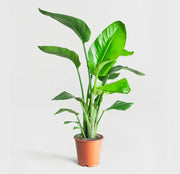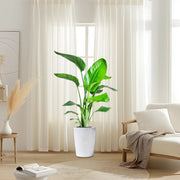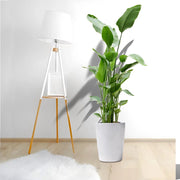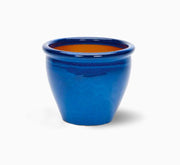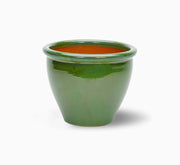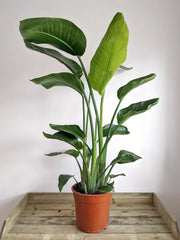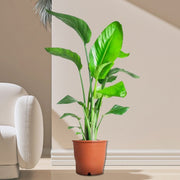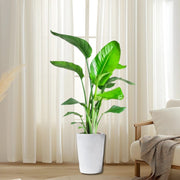Strelitzia Nicolai / Bird of Paradise Plant طائر الجنة
Free returns on all eligible orders
You have 7 days to request a return. All sale items are final sale.
The Bird of Paradise plant is a showstopper in any garden or home, with its dramatic foliage and exotic blooms that resemble a bird in flight. Here's a full breakdown to help you appreciate and care for this tropical beauty 🌿🕊️:
🌺 Overview
-
Scientific Name: Strelitzia reginae (Orange Bird of Paradise) and Strelitzia nicolai (White/Giant Bird of Paradise)
-
Common Names: Bird of Paradise, Crane Flower
-
Origin: Native to South Africa
-
Family: Strelitziaceae
-
Lifespan: Can live for decades with proper care
🌿 Appearance
-
Leaves: Large, banana-like, leathery green leaves that can grow up to 18 inches long
-
Flowers: Striking orange and blue (or white and blue) blooms that resemble a bird in flight
-
Height:
-
Strelitzia reginae: 3.5–6 feet tall
-
Strelitzia nicolai: Up to 10 feet indoors, even taller outdoors
-
-
Spread: 3–5 feet wide
☀️ Light & Placement
-
Light Needs: Bright, direct light is essential for flowering. At least 4–6 hours of sunlight daily
-
Indoor Placement: Near south- or west-facing windows; avoid low-light corners
-
Outdoor Placement: Partial shade to full sun in frost-free zones (USDA 10–12)
💧 Water & Soil
-
Watering: Water when the top 2–3 inches of soil are dry. Avoid soggy roots
-
Soil: Rich, well-draining potting mix with slightly acidic pH
-
Humidity: Prefers high humidity; mist leaves if air is dry
🌱 Growth & Maintenance
-
Growth Rate: Moderate to fast
-
Fertilizer: Feed every 2 weeks during growing season with balanced fertilizer
-
Pruning: Remove dead leaves and spent flowers at the base
-
Propagation: Division of mature plants
⚠️ Common Issues
-
Pests: Watch for spider mites, mealybugs, aphids, and scale insects
-
Problems: Leaf splitting (often from wind or handling), slow growth in low light
-
Toxicity: Toxic to pets and humans if ingested
🌸 Blooming Tips
-
Flowers typically appear from late winter to early spring
-
Indoor plants may take several years to bloom
-
Consistent light, warmth, and feeding are key to encouraging flowers
If you're looking to add a bold, tropical flair to your space, this plant is a top-tier choice.

